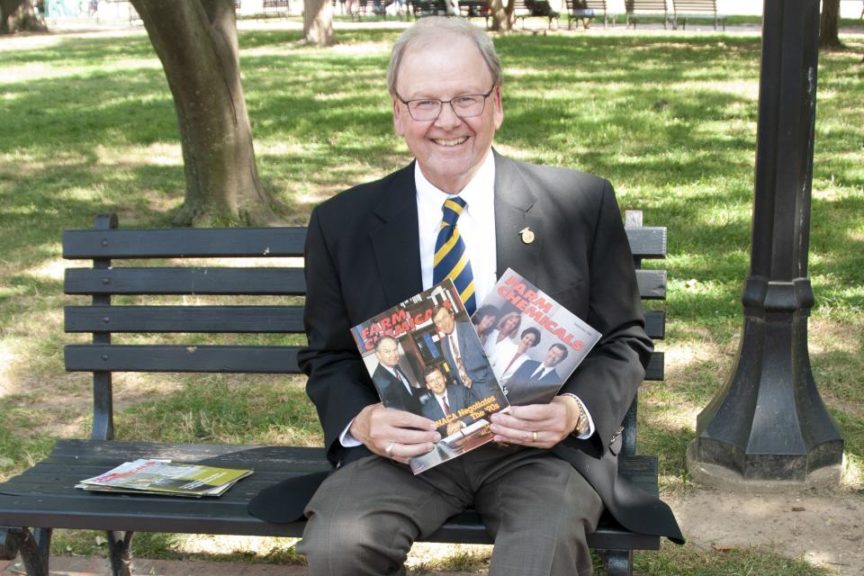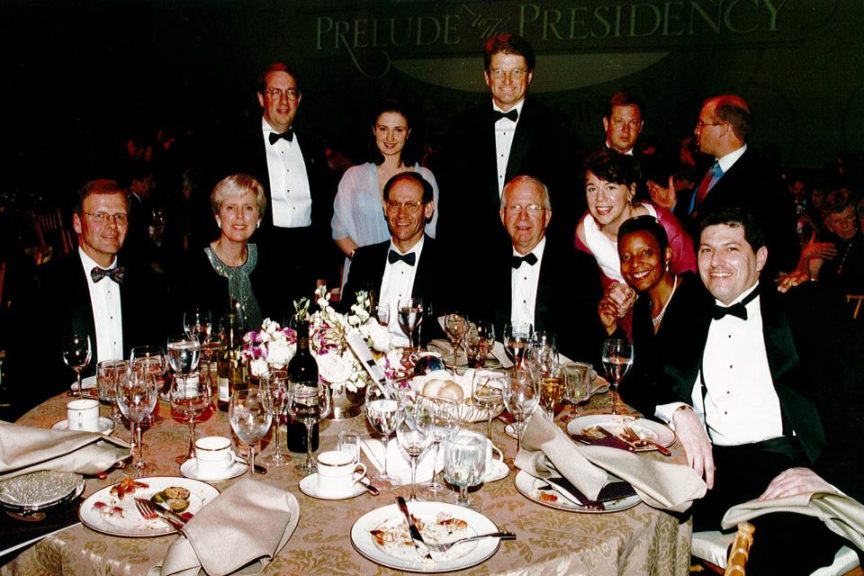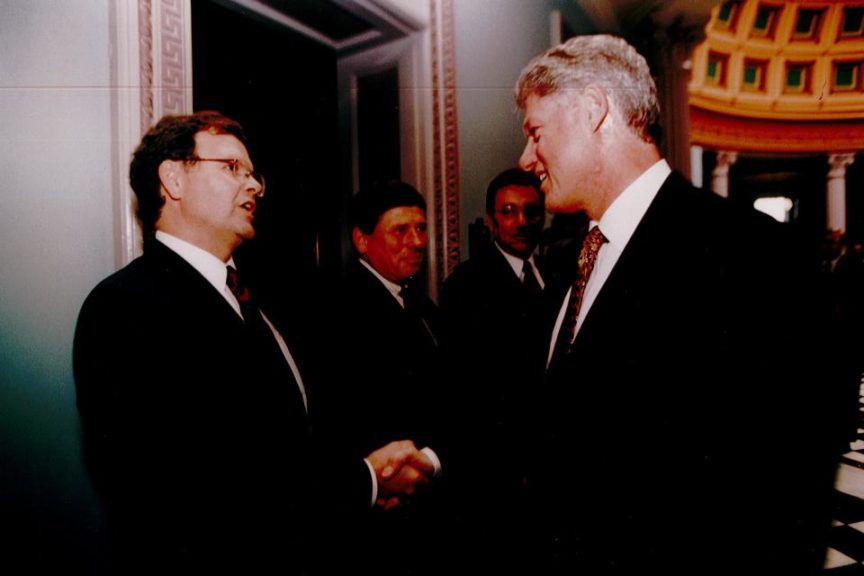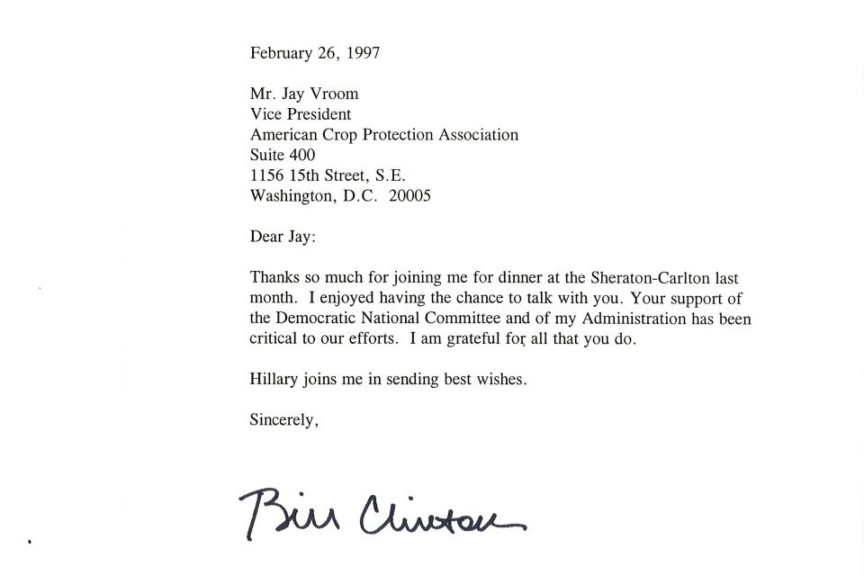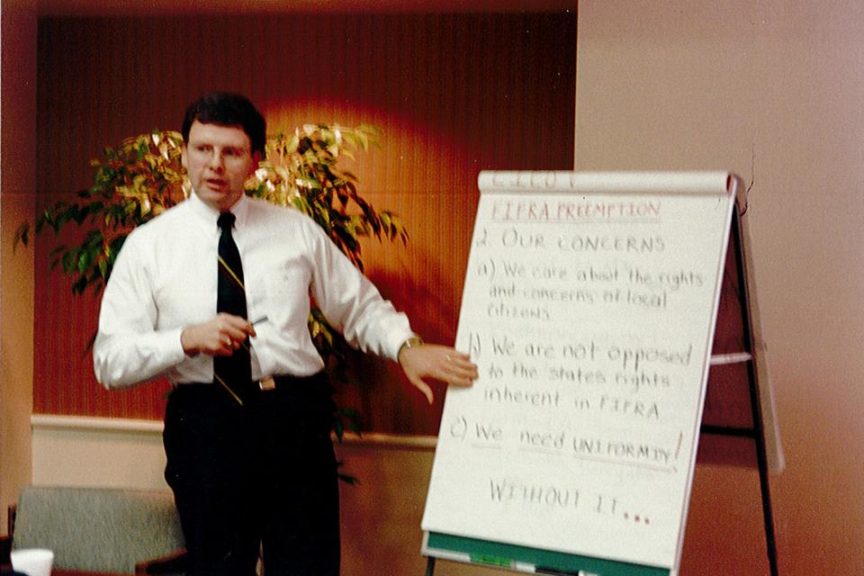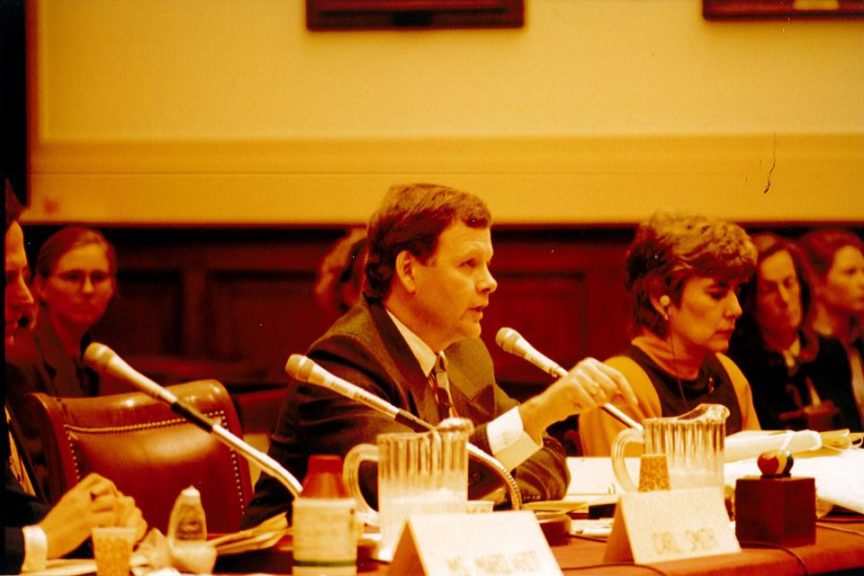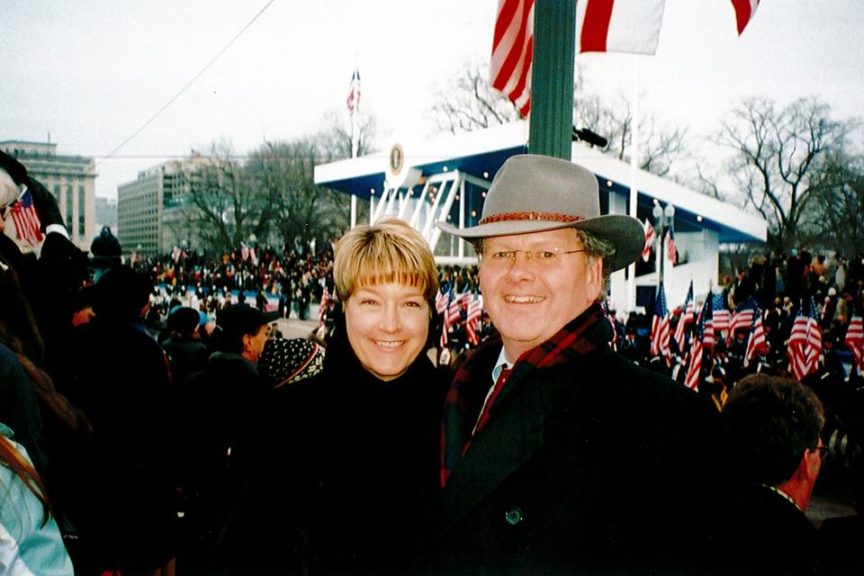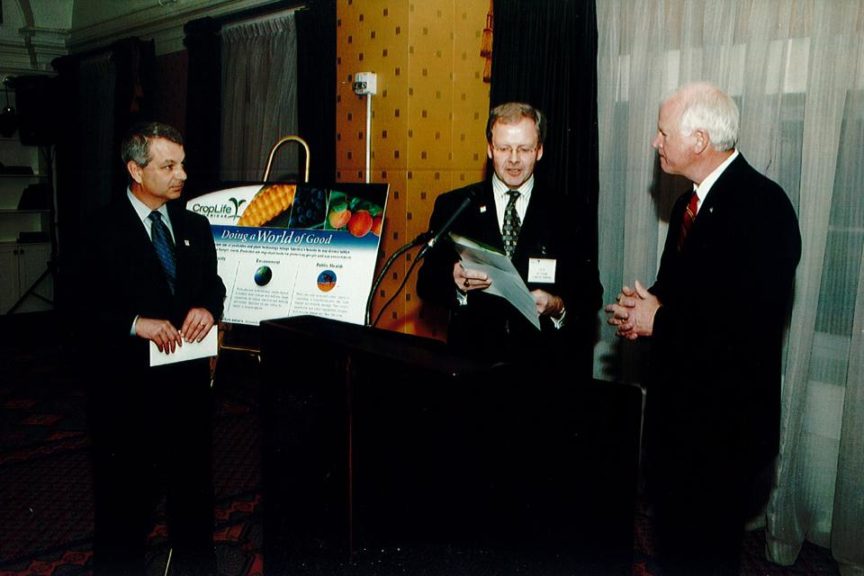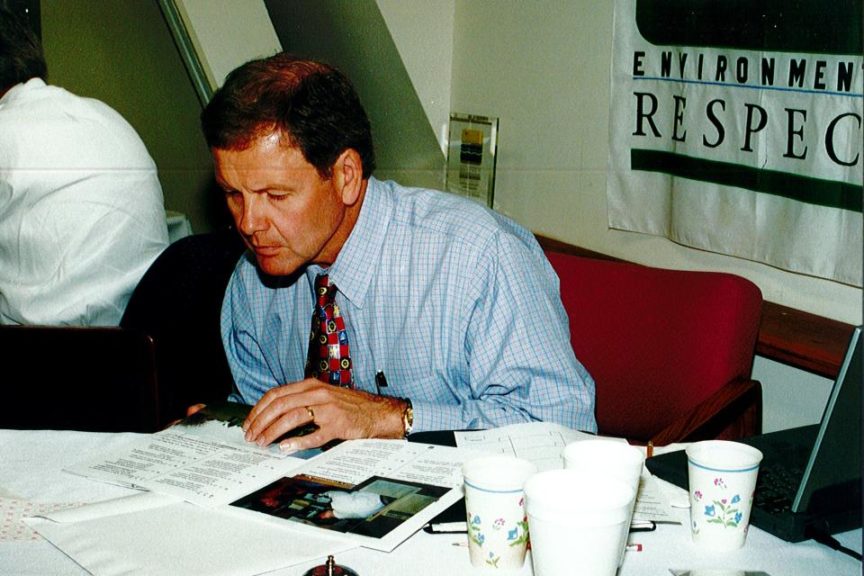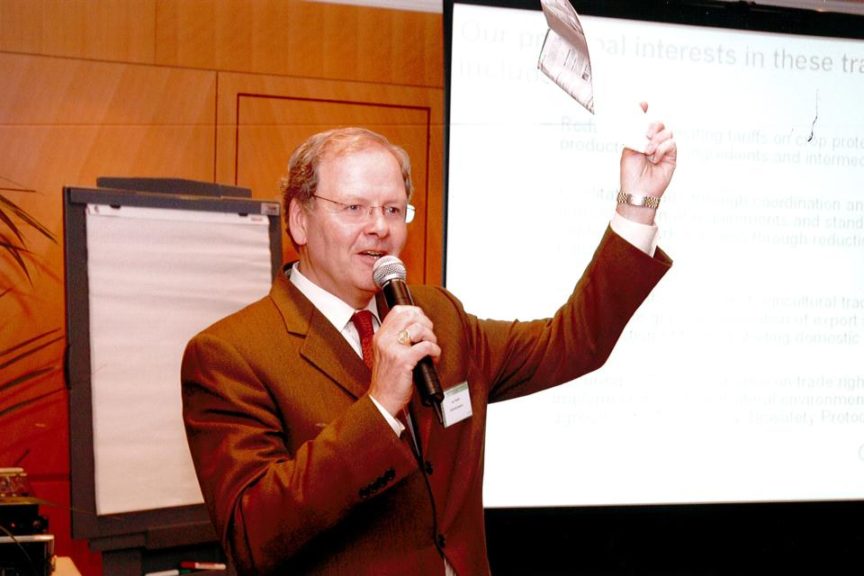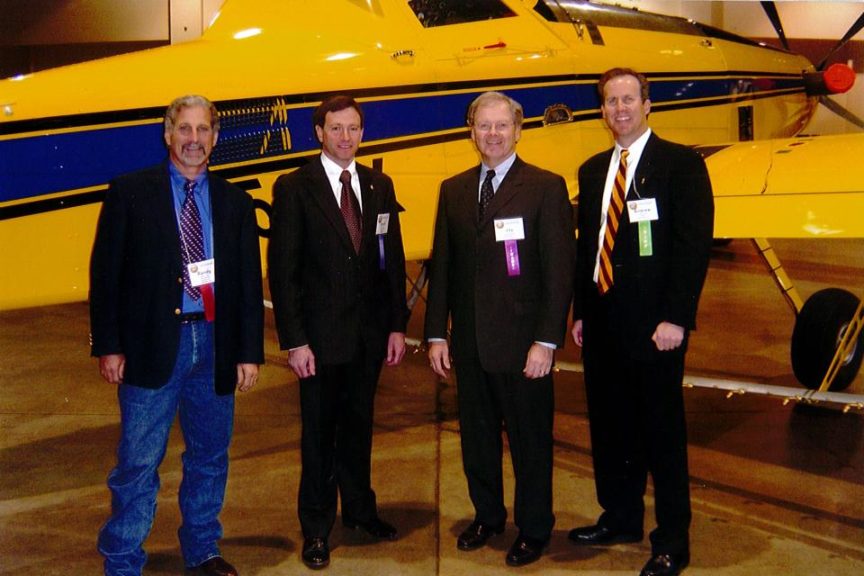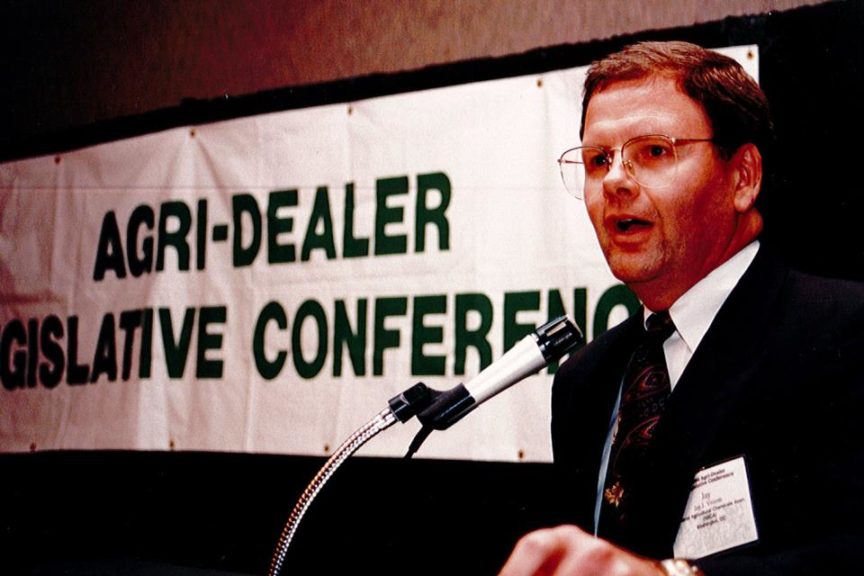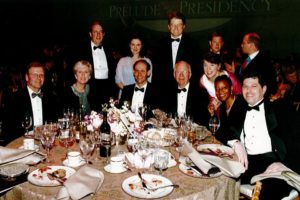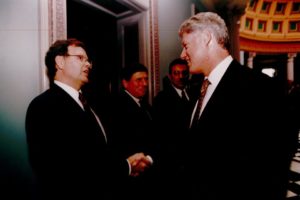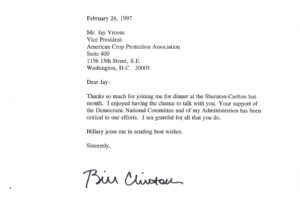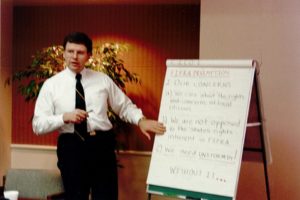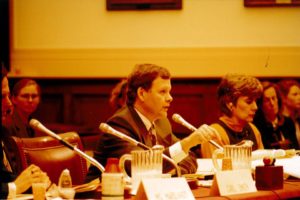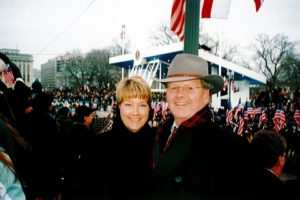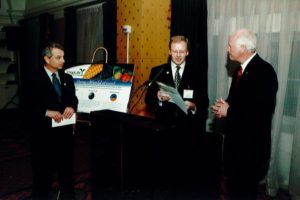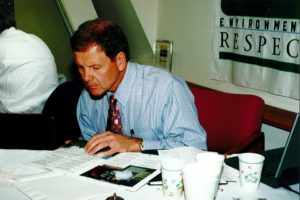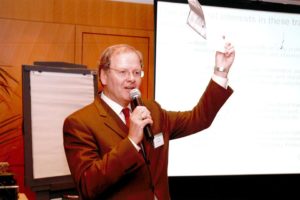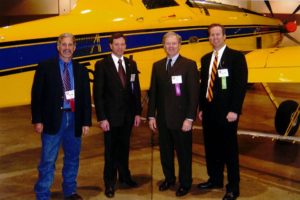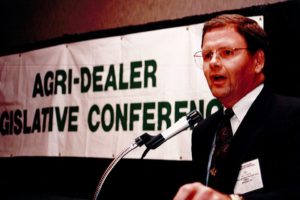A Salute to Retired CropLife America President Jay Vroom
Editor’s note: It goes without saying that crop protection manufacturing is a central point of interest to readers of this publication. So it makes perfect sense that CropLife® magazine and CropLife America, the organization that represents crop protection manufacturers, have enjoyed a strong decades-long relationship. (As an aside, while we share the name, we are not affiliated in any way.)
Dating back to the 1950s, when it was called the National Agricultural Chemical Association, the incoming chairpersons were featured on the cover annually. And for more than 40 years, the editorial lynch pin in this relationship was Charlotte Sine.
Char provided an important and influential voice to the distribution channel as well as crop protection manufacturing. She observed, reported, and editorialized on everything from Silent Spring to the formation of the EPA to the Food Quality Protection Act, providing reasoned and rational perspective. And she knew everyone.
There have only been four presidents of CropLife America over the years, and Char knew all of them personally, including Jay Vroom. We asked her to tell the story of Jay’s tenure at the organization, mixed in with some personal anecdotes and experiences. We, like Char, appreciate Jay’s contributions and wish him all the best in his future endeavors. Also, be sure to check out photo highlights from Jay’s career in the slideshow above.
If you’re looking for a key to Jay Vroom’s decision to step down as president of CropLife America after 30 years, this might be it. Asked what he likes to do in his free time, he answers, “What free time?”
Jay has given 110% from Day One. Make that 150%. He’s always done that, it’s just part of his makeup. He’s not flamboyant, he’s not a glad-hander, nor one to grab all the credit when victories are achieved — or try to avoid blame when failures happen. Most of all, he’s a great communicator and a guy with a knack at getting people with diverse, often conflicting interests to work together. It’s a lesson he learned in his youth as a member of 4H and later FFA.
Jay grew up on a diversified crop and livestock farm in Illinois. He was active on the farm, involved and interested in agriculture. “When I was transitioning from 7th to 8th grade,” he says, “my vo-ag teacher came to visit me and my parents and laid out a plan for my next four years, with an emphasis on being active in FFA and then heading off to University of Illinois with a major related to ag. ‘Do that, and life will be great,’ he said. I’m an unabashed supporter of FFA. In fact, I will be heading their Industry Giving Council for the next two years. FFA showed me what collaboration can accomplish.”
Following graduation with a degree in ag communications, Jay joined the staff of the National Plant Food Institute (now The Fertilizer Institute [TFI]) working with Don Collins, Vice President for Communications. “Don was one of the very best professional communication leaders in ag, a particularly good writer,” Jay notes. “I honestly didn’t have much interest in writing, but he convinced me writing was as important as verbal communication. It’s been an unbelievable asset these 30 years.”
After several years, Jay left to become Chief Executive of the Merchants Exchange in St. Louis, then six years later was named head of National Fertilizer Solutions Association (now Agricultural Retailers Association [ARA]). In 1989 he was approached by Keith Boyer of Brayton Chemical to join the National Agricultural Chemicals Association, CropLife America’s original name, as Vice President of Communications, becoming President when Dr. Jack Early retired. “He convinced the board I was the right choice. So, ‘Thank you, Keith.’ You’re responsible for these last 30 years,” Jay says with a smile.
Jay took command of a streamlined operation in 1989, following a reorganization that created Oversight Committees on Public Affairs, Science and Regulatory, and Legislative and which sunset all but four of 39 standing committees (Law, Washington Representatives, State Affairs, and International.) “We were clearing the decks of a somewhat convoluted committee structure to be able to react more quickly and efficiently,” he says.
Another important step — reaching an accord with TFI to work together on projects to support retail dealers and their state and regional associations with the primary focus on legislative and regulatory issues.
Weathering The Storms
There was a need for accord because the issues just kept coming and coming. None was hotter in 1989-90 than Alar. Who doesn’t remember Ed Bradley on CBS’ 60 Minutes holding a sign of an apple with a skull and crossbones and declaring, “Alar-treated apples are a threat to the health of kids.” The fight over the Delaney Clause was just beginning. Eight years later the clause passed and was signed into law by President Bill Clinton, creating a gold standard for the world to apply modern human health risk assessment to pesticide regulation.
“In some ways, the legislative cure was worse than the disease,” Jay says. “It was tough sledding before the Food Quality Protection Act (FQPA) passed. It took a letter from Carol Browner, then the head of EPA, to members of Congress assuring that EPA was already doing everything that the law described, and it would just institutionalize standard procedure.“
There was a new sense of cooperation between industry and EPA. “It became evident that EPA was underfunded. Updated maintenance fees and a new product registration fee for services provided were supported by our industry and led to passage of the Pesticide Registration Improvement Act (PRIA),” he says. Interestingly, reauthorization of the fourth iteration of PRIA is now pending.
Communication, Collaboration
Collaboration could be Jay’s middle name. He fostered strong relationships with the Food Chain Coalition, with ARA and TFI, regional and state associations, as well as other ag groups. The change was obvious to Congressional aides on Capitol Hill and to reporters. One aide noted that “the ag chem industry has become more highly visible, more accessible, and unlike in the past, is often ready to take a position on an issue in the news.”
“Industry’s message, because it’s repeated consistently and frequently, is beginning to make a difference in how our story is played out in the media. A message will only be a little effective when you are dead tired of delivering it. Repetition is more important than overload. We are light years away from saying we’ve arrived, but we are making progress,” Jay noted in the mid-1990s. “Routine meetings and conferences are held to brief Congressional aides and the media on the gritty details of pending legislation. That’s where 90% of information transfer happens.”
That … and the Web … and now social media. Easier to communicate but challenging. Today there is an understanding, much to Jay’s credit, among CLA members that communication is as vital and as important as development of new chemistries. Based on the foundation he has established, CropLife America will continue to be the strong voice for the industry and American agriculture.
“Looking back, these 30 years could not have been more rewarding,” Jay says. “I love being connected to agriculture, working with incredible people and fabulous leaders that I got to know on a personal level. I’m eternally grateful, but it’s time to flip the switch. There are other things in life I want to do personally and professionally.
“I’m 64 years old, and no one lives forever. My wife Jamie and I have been married for 43 years. We’re both farm kids, our families know each other. She appreciates our industry and has become good friends with our members and their spouses. She’s a great partner, and I’m delighted to have had her help all these years. We want to spend more time with our grandkids and their parents and more time on our farms in Illinois and working with FFA. I have no regrets, but it’s been all consuming these 30 years, and it’s time to move on.”
Regarding this brief reflection on his career, Jay is once again humble: “The past is only of value in terms of what kind of footing it provides our members and our customers and colleagues. The most important challenge is what’s ahead of us — to solve the biggest challenge mankind has ever faced: How are we going to feed 9½ to 10 billion people in just a handful of decades and do so in an ever more environmentally sustainable way? I’m confident that we will, but it will take a lot of effort.
“There are a lot of people who still don’t appreciate, understand, or like what we do, and we need to have a majority of the people in democracy understand, embrace, and get behind us. And to encourage innovation in crop chemicals, biocontrols, fertilizers, and precision ag to help farmers get the job done.”
Congratulations Jay! Your work has been an inspiration to all.

